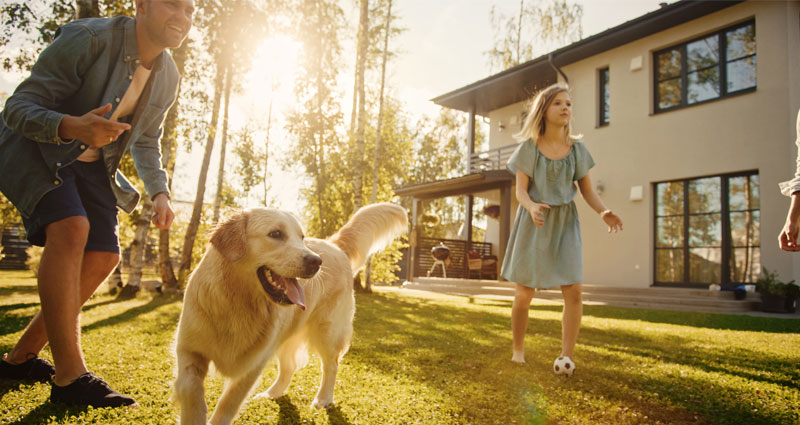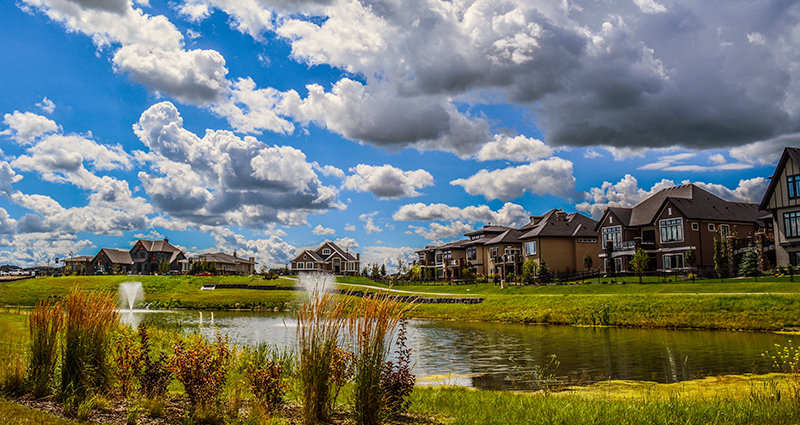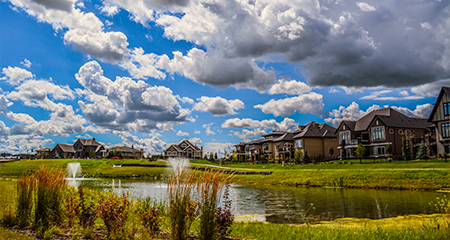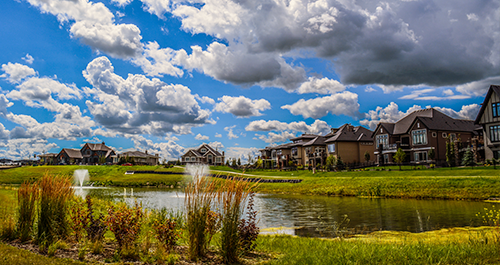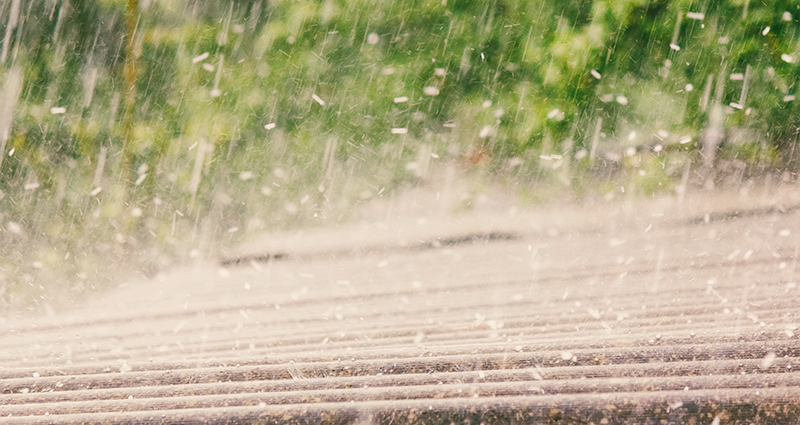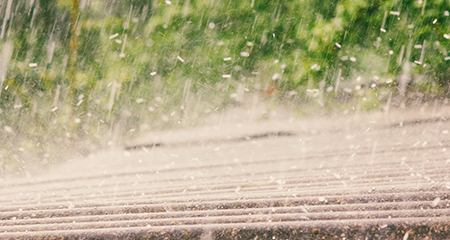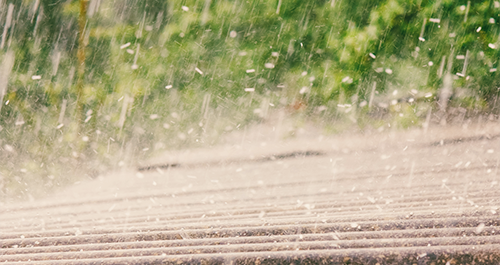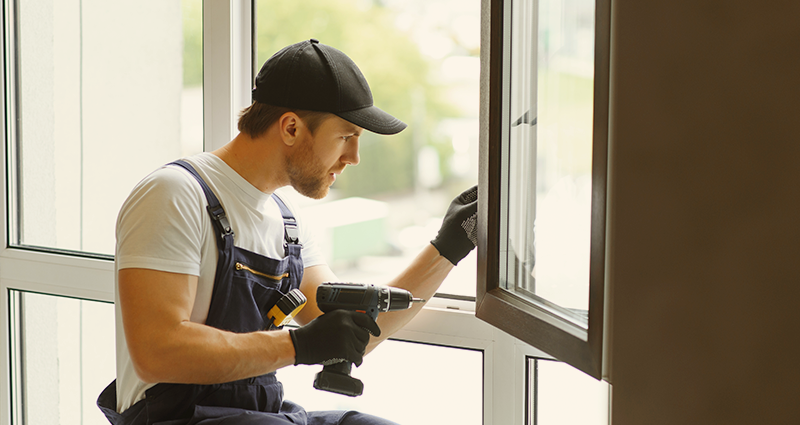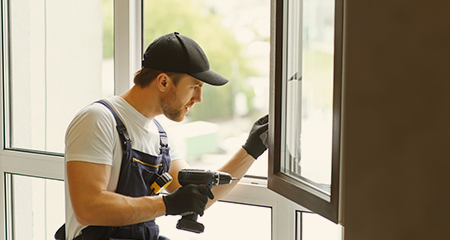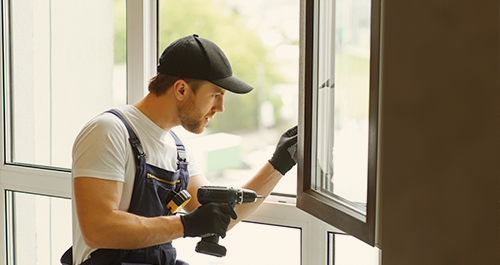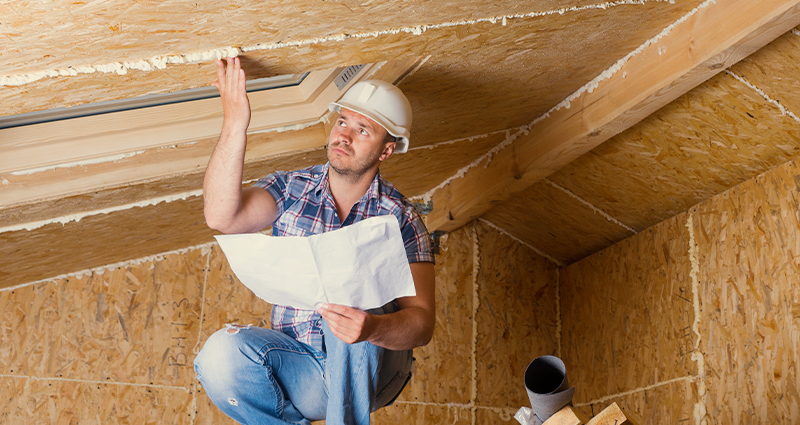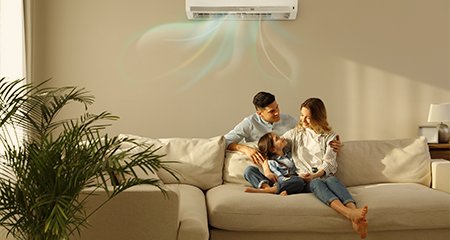Protect your home from hailstorms.
Because where we’re located,ÌýÌýin Canada.ÌýÌýHail fly down at dangerous speeds—up toÌý130 kilometres an hour! That is seriously life-threatening and can severely damage your home, property and vehicles.
A safety plan for potential hailstorms can help protect your family, home and belongings.
Preparing for a hailstorm
Big thunderstorms can quickly turn into hailstorms, so it’s best to be prepared. Here are some tips:
- Watch the weather.ÌýHailstorms usually follow dark clouds, thunder, lightning, violent winds and pouring rain.
- Pay attention to thunderstorm warnings.ÌýPick up a hand-crank or battery-powered radio to keep up with forecast updates in case the power goes out during a storm.Ìý
- Download theÌýÌýto your mobile device for alerts in your area.
- Protect your outdoor items.ÌýIf you can, put vehicles, boats, patio furniture andÌýotherÌývaluable itemsÌýin a covered area, like a carport, barn, garage or shed.
- Close all windows and doors.ÌýClose curtains or blinds to contain any glass that may shatter if the window breaks.
- Have your roof inspected.ÌýA roofing contractor can let you know if you have proper protection against strong winds and hailstones and recommend improvements.
- Trim trees and bushes.ÌýIf branches break, they could fly into your house or yard. You can reduce damage by cutting off dead branches and keeping the others trimmed.
- Protect your livestock.ÌýIf you can, move your livestock to an area where they will be sheltered from the hail, like a shop or barn. Ìý
What to do during a hailstorm
Ìýand theÌýÌýoffered this advice for protecting your family and home during a hail storm:
- Take cover.ÌýImmediately move your family and pets inside. Stay away from windows, as they could potentially break!
- Stay informed.ÌýListen for alerts, updates and instructions from local emergency responders and services. This is where the Alberta Alerts come in handy.
- Pull off the road. If you are driving, find a safe spot to pull over and face away from windows to avoid broken glass.
- Watch for flooded areas.ÌýExcessive hail and rain can plug storm drains and cause flooding. Look for flooded areas on the road and your property.
- Watch out for lightning.ÌýStay away from trees, towers, metal fences or poles that may attract lightning, and do not touch any metal objects in your home (like the stove, sinks, or radiator) during the storm.
- If you’re outside, shield yourself.ÌýIf you cannot find shelter, crouch down and protect your head and neck with your hands. Face away from the wind until the storm subsides.
Protect your home from the heat.
When the temperatures rise, it can bring many challenges! Homes can reach uncomfortable and even dangerous temperatures, especially without air conditioning. Be prepared for the next heat wave with these summer home safety tips.
Limit appliance and light use.
Using your appliances and lights can bring up your home’s temperature during a heatwave. Avoid using major appliances, like the oven or stove, during the day. Instead, fire up the barbeque and enjoy the outdoors! As a rule of thumb, any appliance that requires heat to operate, uses a lot of electricity and can raise indoor temperatures.
If your lighting still uses candescent bulbs, swap those out for LEDs. Conventional bulbs produce a lot of heat and will bring up the home’s temperature on a hot summer day. Learn more aboutÌý.
Use exhaust fans and dehumidifiers.
Exhaust fans and dehumidifiers help preventÌý. Warmer temperatures and excess moisture from rainstorms can promote mould growth in your home.
If it gets too humid after a major storm, or you suspect water has penetrated the basement, use a dehumidifier to remove the extra moisture. If there is a moisture issue downstairs, check your gutters and downspouts and make sure they’re moving the water away from your foundation. If you can’t find the root of the problem, hire a contractor to take a look.
Always turn on the bathroom exhaust fan during and after bathing or showering. And when you’re cooking on the stove, flick on the range vent to move that warm air out of the house.
Invest in central air conditioning.
Ìýthan central air conditioning systems. Plus, they can only really cool the room they are in and are not as efficient.
We’ve reached some dangerously high temperatures in recent years, so investing in a central air conditioner might be worth it. When you purchase anÌý, you will save energy compared to a non-certified model. Those energy savings will add up over time, and you’ll feel at ease knowing your home will be comfortable and safe during a summer heatwave.Ìý
Have your air conditioner serviced.Ìý
Air conditioner maintenanceÌýis critical to the performance and efficiency of your cooling system! Ensure the area around the outdoor unit is clear of debris, like leaves and twigs, and change the air filter at the start of the season. Changing the filter reduces strain on your AC and improves efficiency and indoor air quality.
Reach out to an HVAC technician for a full inspection and tune-up each spring. They’ll check the entire unit and HVAC system and make sure everything is running smoothly and safely for another cooling season. Overworked and overheated air conditioners can cause electrical issues and fire hazards!
Open windows at night.
Once the sun goes down, crack open those windows! Thankfully, the air cools significantly at night in Alberta, so let that cool air in. Airing out the house can improve air quality and reduce humidity. Don't forget to turn off your air conditioner when you open the windows at night. In the morning, shut the windows and close drapes or blinds to keep in the cool temperatures.


